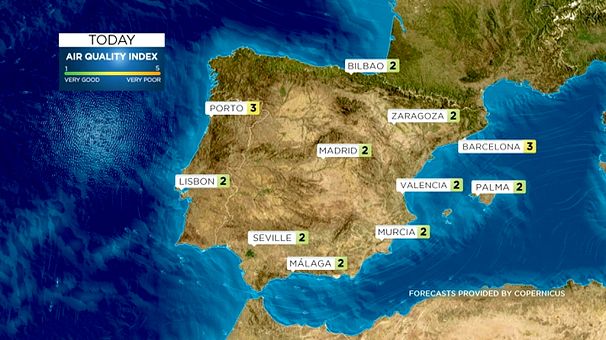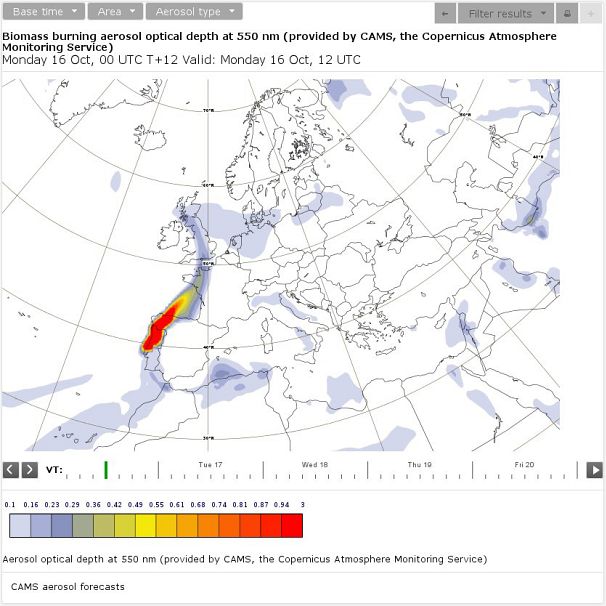Reliable environmental information is of crucial importance to society. It helps us monitor the state of our planet, how the climate is changing, the role played by human activities in these changes and how these affect our daily lives and ecosystems. The well-being and security of future generations are more than ever dependent on everyone’s actions and on the decisions being made today on environmental policies. Copernicus helps policy makers, businesses and citizens to develop the appropriate responses.
On October 13th, Sentinel-5P, the 6th satellite of the European Copernicus programme, was successfully launched by the European Space Agency from Plesetsk cosmodrom (Russia). Its mission? To perform atmospheric measurements with high spatio-temporal resolution of the concentrations of aerosols (airborne particles) and of numerous trace gases relating to air quality, ozone layer and to climate forcing.
With 3 or 4 more Sentinels to be launched in the next few years, this satellite is the latest addition to the ambitious Copernicus Earth monitoring programme, a complex set of systems collecting data from multiple sources : earth observation satellites and in situ sensors such as ground stations, airborne and sea-borne sensors. The aim is to use these data to provide reliable and up-to-date information about environmental and security issues. This European Earth monitoring programme (previously known as GMES for Global Monitoring for Environment and Security) arose from a joint initiative of the European Union implemented in collaboration with international organisations such as the European Centre for Medium-Range Weather Forecasts (ECMWF), the European Environment Agency (EEA), the European Organisation for the Exploitation of Meteorological Satellites (EUMETSAT) and the European Space Agency (ESA).
Copernicus, a European programme to provide full, free and open access to environmental data and information
Six thematic streams of Copernicus services (atmosphere, marine, land, emergency, climate change and security) process and analyse a wealth of Earth observation data and provide value-added information, free of charge and in open and unrestricted access. They support a wide range of applications to help decision makers, businesses and citizens to tackle the challenges of a changing climate and environment in Europe and the rest of the world such as management of urban areas, regional and local planning, water management, energy, agriculture, forestry, fisheries, health, transport, sustainable development, tourism…
The European Centre for Medium-Range Weather Forecasts (ECMWF) operates two of those services : the Copernicus Climate Change Service (C3S) and the Copernicus Atmosphere Monitoring Service (CAMS) on behalf of the European Commission. ECMWF is an independent intergovernmental organisation, producing and disseminating numerical weather predictions to its 34 member and co-operating states.
Atmospheric composition, one of the most important environmental concerns
The Copernicus Atmosphere Monitoring Service (CAMS) provides continuous data and information on atmospheric composition. At the Earth’s surface, aerosols, ozone and other reactive gases such as nitrogen dioxide determine the quality of the air around us, affecting human health and life expectancy: latest estimates by the European Environment Agency (EEA) show that fine particulate matter continues to cause the premature death of more than 400 000 Europeans annually and a recent study in The Lancet indicates that pollution is linked to 9 million deaths worldwide in 2015, air pollution being by far the largest contributor. By providing near-real-time analyses, 4-day forecasts and re-analyses of the air quality over Europe and worldwide, CAMS, through its permanent assessment of the air we breathe, is essential for policymakers, business and citizens, as well as health authorities to carry out preventive measures.
Besides air quality and atmospheric composition, CAMS contributes to climate change studies by monitoring climate forcing agents such as aerosols or greenhouse gases, delivers information on the state of the ozone layer in the Antarctic, monitors solar radiation (particularly useful for health, agriculture and renewable energies) and analyses surface fluxes and emissions such as these from wildfires.
A European climate data store to inform and support adaptation policies to climate change
With a sustained network of in situ and satellite-based observations in every area of the programme, the Copernicus Climate Change Service (C3S) provides access to a wide variety of climate indicators (surface air temperature, sea level rise, Arctic sea ice extent, precipitation, growing seasons, drought events…) for both the identified climate drivers and the expected climate effects. Through observations, re-analysis and modelling scenarios based on a variety of climate projections, C3S Climate Data Store contains the geophysical information needed to analyse the climate change indicators in a consistent and harmonised way. The store combines the functions of a distributed data centre with a set of services and facilities for users and content developers to support adaptation and mitigation policies at European and global levels.
C3S is also building a Sectoral Information System with tailored climate indicators in support of primary users such as institutional users at European level, such as the Climate-Adapt platform of the EEA (European Environment Agency), but also science users, innovation app. developers, business sectors and local policy makers. These tailored data and tools are designed to support public and commercial applications and policy development.
From Sentinel satellites to Climate Data Store and Sectoral Information Systems, the Copernicus programme highlights European efforts to provide transparent and reliable climate change information available to all. Constantly working on improved workflows, stronger spatial analysis, and deeper insight from intelligent maps and apps, Copernicus is key in supplying layers of additional qualitative information to be used by the Geographical Information Systems (GIS) of today and tomorrow. It helps the United Nations to accomplish the Sustainable Development Goals by putting in decision makers’ hands, in Europe and in the rest of the world, the relevant tools to monitor trends, evaluate needs, and create efficient and effective development policies.




